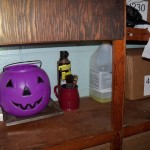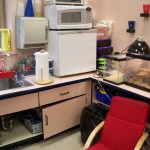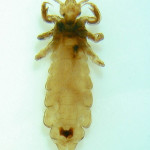Why is IPM so important?
Most of us in our everyday lives don’t give pest control a second thought. We only react after we see a roach or a mouse run through our house. Yet in our professional surroundings, some of us are asked to follow Integrated Pest Management (IPM) either by law or voluntarily.
IPM is a strategy that provides quality pest control using the least hazardous chemicals and techniques. IPM programs use current, comprehensive information on the life cycle of pests and their interactions with the environment. This information, in combination with available pest control methods, is used to manage pest damage by the most economical means, and with the least possible hazard to people, property, and the environment.
Schools and childcare facilities face risks from to pests as well as the pesticides used to control these pests. Pesticides can help control pests but must be used carefully. It’s important for all of us to remember that children may be more sensitive to pesticides than adults. Young children, especially, may have different exposures than adults – – they can encounter pesticides by crawling, exploring, or hand-to- mouth activities.
While this information is nothing new to most of the readers of this newsletter, anyone who works with pesticides on a regular basis needs an occasional reminder. Consider the following real life stories taken from the news over the past few years.
- A janitor is asked to reduce a weed population around an elementary school campus. The janitor, who is not licensed to apply any type of pesticide, chooses a restricted-use pesticide. Restricted-use pesticides are hazardous chemicals and must be applied by a licensed applicator. This janitor sprays the weeds during the school day, while the kids are in class, outside the open classroom windows. The end result is 40 students going to the hospital and 90 people are evacuated from the building. Not only did this school not follow IPM, but it ignored indoor air quality issues. The parents of this district were extremely upset and “stormed the superintendent’s office.”
- A coach keeps a can of wasp spray in his office so that he can take care of problems when
 they occur. The athletic field house is located a distance from the main school buildings and wasps like to build their nests on the eve of this building. The coach feels that it’s okay to “get rid of this problem” and “it’s no big deal” to spray a wasp spray whenever he has a problem. While no student has ever been harmed, others have seen this happen and know that the coach is violating a law. The coach is turned in, an investigation follows, and the school district now faces legal actions.
they occur. The athletic field house is located a distance from the main school buildings and wasps like to build their nests on the eve of this building. The coach feels that it’s okay to “get rid of this problem” and “it’s no big deal” to spray a wasp spray whenever he has a problem. While no student has ever been harmed, others have seen this happen and know that the coach is violating a law. The coach is turned in, an investigation follows, and the school district now faces legal actions.
Most will read these two stories and think “no harm, no foul” or maybe not. The problem with anyone who is not licensed applying a pesticide around children or other sensitive individuals is that you never know how it will affect someone. In the case of the weed killer, children were sick, their parents were very upset and the district had to react to a needless problem. In the case of the coach, while there was no one around when he sprayed the wasps, there could have been.
By simply adopting IPM and using folks like custodians, teachers, and staff members as the eyes and ears for the district; the IPM Coordinator can react to problems quickly and efficiently. Remember that licensed pesticide applicators are trained professionals that understand the requirements of mixing, loading, applying and disposing of pesticides properly. More importantly, by using licensed professionals in your district sets an example for your community that lets parents and teachers know that you care about the safety and well-being of the children and staff.
Remember in school and childcare facilities IPM programs are the responsibility of everyone working together to reduce both pests and pesticide threats to students, teachers, staff members, and administrators.
Tips for teachers and staff to help with IPM
Clutter and pests go hand-in-hand: In most schools today clutter is a natural phenomenon that just “happens.” However, many pests (cockroaches, spiders & mice) thrive in areas that accumulate a lot clutter. Clutter control is essential in classrooms to reduce potential habitats for pests.

Summer storage can lead to pest problems later in the school year. Try storing items inside plastic storage containers for easy use and cleanup.
- Keep materials organized in plastic storage boxes with lids.
- Eliminate cardboard wherever possible.
- Store items several inches away from walls so that storage areas can be easily inspected for pests.
Facing the food battle in the classroom: These days keeping food out the classroom is not as easy as before. There are those rooms that students spend their entire day in the room, even lunches. That said, teachers and students can help keep pest populations from going “out of control.”
- Store food in pest-proof plastic containers.
- Keep items like beans, corn, and macaroni in plastic containers and pick up spilled items after each use.
- If food or drinks are spilled in the room, clean it up immediately.
- Encourage students not to keep food, drinks or candy in their desk or lockers. Have a cleaning party before long school breaks.

Pets in the classroom are good only if they don’t distract or add more stress for teachers and students. Pets can become pests when ants, mice, and gnats also inhabit their space.
Pets in the classroom: Pets in a classroom can provide valuable learning opportunities; however, they can also lead to pest problems.
- Store pet food in sealable containers; make sure the lids are closed tightly each day.
- Clean up food or water spilled during routine feedings.
- Clean pet cages and aquariums on regular basis.
- Check aquariums periodically for water leaks.
- Avoid placing pet cages and aquariums on wooden boxes, place on an open pedestal – less area for pest s to hide.
Report problems and monitor for pests: Teacher and custodians are usually the first to find a problem. However they do not always think to report it.
- Report water leaks, cracks in doors and windows, or other items needing repair.
- Help identify pest vulnerable areas to the IPM Coordinator or the licensed applicator.
- Use a pest sighting log in each building, report pest sightings immediately and accurately.
- Don’t move pest monitoring stations, if you notice one has been moved report it.
- Don’t store pesticides in your room or custodial closet.
Be prepared for back to school and avoid head lice this year.
A new head louse season begins each year with the opening of school. According to the National Pediculosis Association, millions of children in the U.S. will be infected with head lice this year. Many of these head louse infections will be contracted in school settings.
Many school employees are baffled as to the reason and cures for head lice. The purpose of this article is to clarify some important facts about head lice and offer some practical management suggestions for school pest management coordinators.
Head lice are tiny insects that live only on the scalps of humans. Head lice feed on blood, cause itching and are a source of embarrassment to the child (and parents).
Much misinformation about head lice abounds. Infestation is not necessarily a sign of poor hygiene. Head lice occur on all people regardless of socioeconomic class. Head lice do not jump. They are spread primarily by crawling from one person to another, often via secondary transfer on hats, combs, headbands, jackets, etc. It is possible, though less likely, that head lice can be transferred by sharing upholstered chairs, bean bags, or carpeting.
Head lice can be very difficult to eliminate from children’s’ hair. Parents often assume, or are told by physicians, that the difficulty in eliminating infestations is that their child is becoming re-infested at school. While this can happen, it is probably more often the result of improper or inadequate treatment at home.
Because head lice can be transferred from person to person on carpeting or furniture, and because parents often blame the school for the problem, maintenance departments are often called upon to help solve head lice problems.
Head lice should be considered a medical, not a housekeeping, problem. For this reason, school nurses working to educate parents and teachers should take the lead in handling most louse problems in a school. In cases where school nurses are unavailable, or unfamiliar with head lice, the IPM coordinator can help by making sure that everyone is provided with the best, most accurate information about head louse control.
Some school districts, following significant head louse epidemics, have opted to pass strict “no-nits” policies. Under such policies children are often sent home immediately if found with head lice, and not allowed to return to school until certified to be nit (egg) and louse-free by a doctor or school nurse.
The National Association of School Nurses has recently decided to oppose no-tolerance policies for several reasons:
- Nit-free policies have not been shown to be significantly better than other, more tolerant approaches.
- The negative effects on children caused by the loss of school time and the social ostracism are not justified by the minor health effects of lice infestations.
- Nurses and other health-care specialists are generally not trained to accurately identify active louse infestations, often leading to over-diagnosis of pediculosis (infestation with head lice).
The Centers for Disease Control and Prevention recommends the need for good information for parents about what they can do to eradicate head lice from their children’s hair. Thorough and repeated combing with a comb specifically designed to remove nits and lice (mechanical control) is the primary method of control, supplemented by over-the-counter lice killing treatments (pediculicides) such as shampoos containing permethrin or pyrethrins. We recommend that IPM coordinators and school administrators consider making the CDC webpage and handouts available to teachers, staff and parents http://www.cdc.gov/parasites/lice/head/
Facts about lice
- Head lice infestations are more prevalent among younger grade levels.
- Head lice cannot survive off a host for more than 48 hours. Therefore, school classrooms that remain unoccupied for a two-day weekend will not remain infested.
- Head lice eggs require 7-10 days to hatch. Eggs are not generally susceptible to pesticides, therefore most lice shampoos must be repeated on a 7-10 day basis.
- Careful and consistent use of lice removal combs are one of the best treatments for head


 .
.
Pingback: Why is IPM so important in schools? | IPM in the South